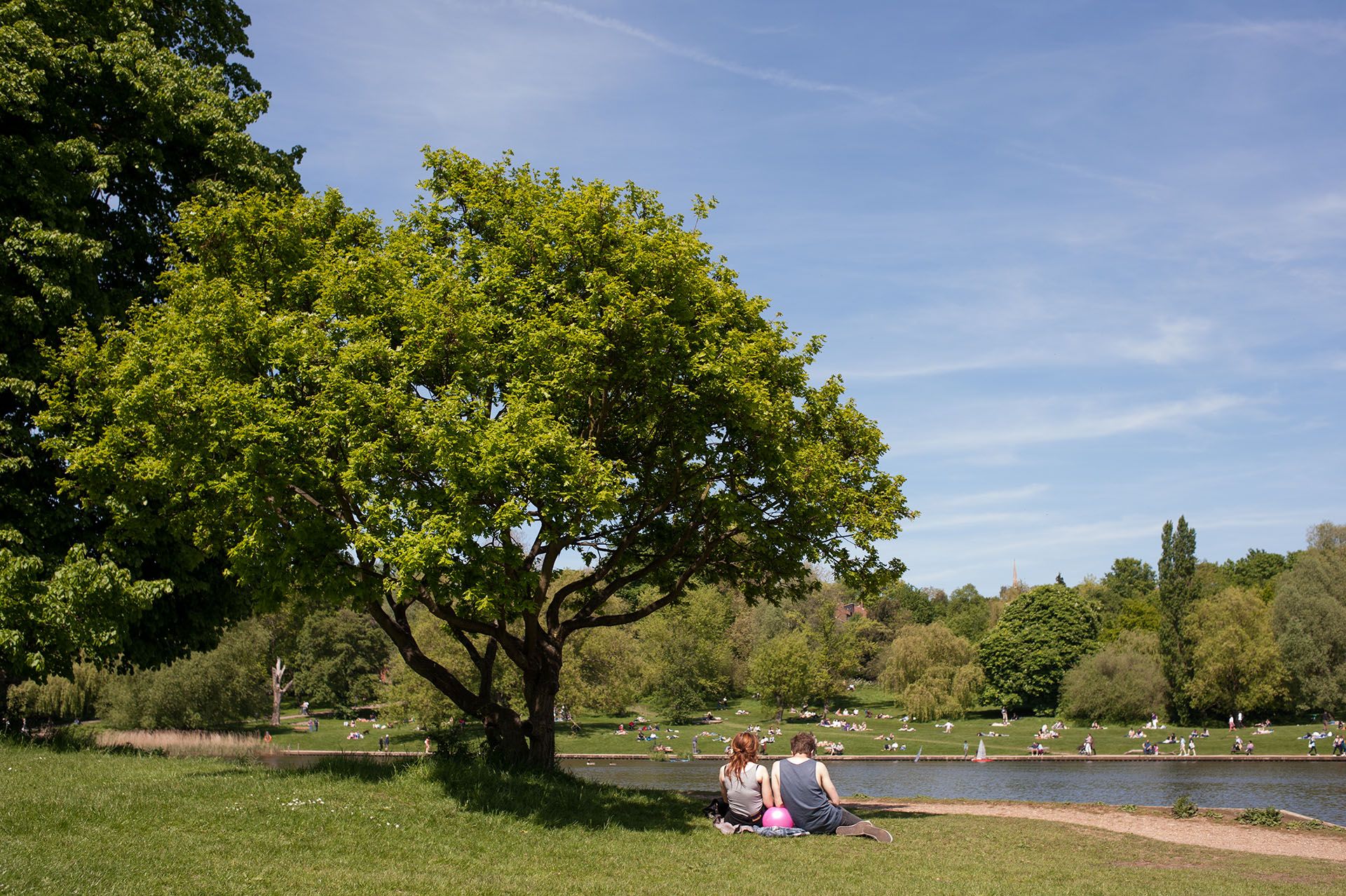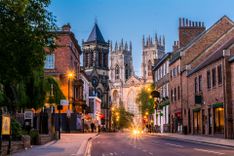After crossing another bridge near the park, you’ll reconnect with the canal and follow it toward Green Lanes. Once through another kissing gate, you’ll have a nice elevated view toward St. Mary’s Church in Stoke Newington.
Crossing Seven Sisters Road, the next part of the walk passes Woodberry Wetlands and the Castle Climbing Centre, which is hard to miss with its castle-like turrets. There’s a café inside if you’d like a meal, or you can wait until Clissold Park, where Clissold House—an old mansion from the 1700s—has a café serving homemade food.
If you're more in the mood for a pint, hold out a bit longer for The Snooty Fox near Petherton Road and Grosvenor Avenue. By then, the canal has dipped underground again, running just beneath the grassy median in the middle of the road.
The final stretch, from Canonbury to Sadler’s Wells, runs alongside a landscaped section of the canal, dotted with fountains, willow trees, pines, and boulders. After that, you’ll come out on Essex Road and wind through Camden Passage’s little boutiques before finishing on Rosebery Avenue, right by Sadler’s Wells Theatre.
6. Marsh to Marsh—Hackney to Walthamstow
Hackney and Walthamstow might feel pretty built-up, but this walk links the two through a surprisingly green stretch that cuts across east London. It’s flat the whole way and easy to follow, so it works well for walking in London with kids or riding a bike.
Start at Hackney Central station and head towards Hackney Grove. From there, follow the shared cycle and footpath through London Fields. Once you’ve crossed the park, it’s worth detouring slightly for a bite at Broadway Market—plenty of food stalls and cafés, especially on the weekend.
After that, loop back toward Victoria Park and pick up the towpath that runs along the Hertford Union Canal. You’ll pass under weeping willows, alongside a lock-keeper’s cottage, and past the Growing Concerns Garden Centre.





















